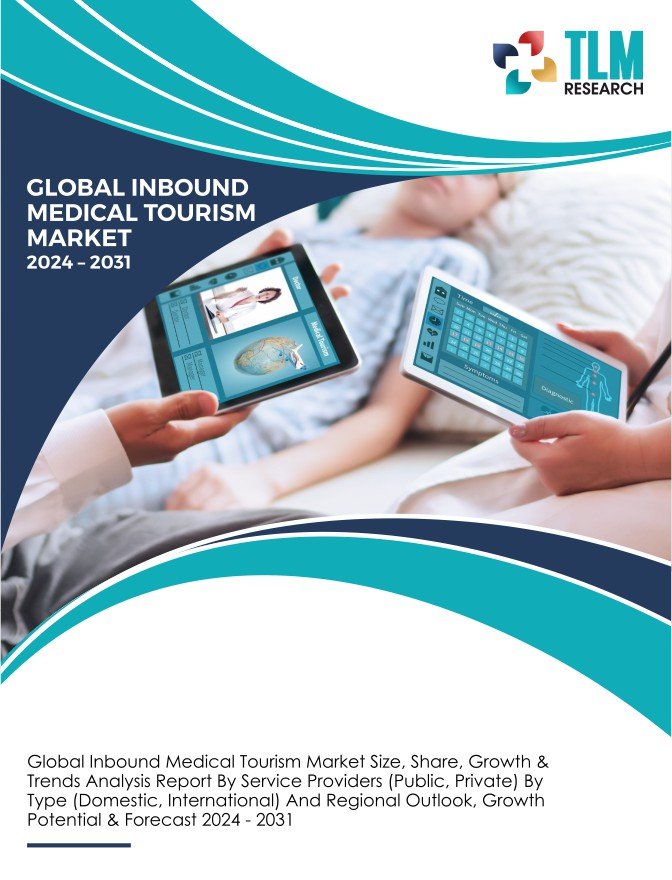Description
Global Inbound Medical Tourism Market: Description
Global Inbound Medical Tourism market size was worth USD 4.8 billion in 2023 and is expected to grow to USD 43.7 billion in 2030 with a CAGR of 32.9 % in 2023-2030.
Global Inbound Medical Tourism Market: Overview
The term “medical tourism” describes the practice of people going abroad for medical care or services. Patients traveling to a particular nation for medical treatment are part of the global inbound medical tourism market.
Global Inbound Medical Tourism Market: Covid-19 Impact
The medical tourism industry has been profoundly impacted by the COVID-19 pandemic. Medical tourism has decreased as a result of travel restrictions, lockdowns, and worries about the virus’s potential to spread. Healthcare services accessibility may be impacted by patients’ reluctance to travel for non-essential medical procedures and destination countries’ implementation of stringent measures to contain the pandemic.
Global Inbound Medical Tourism Market: Growth Drivers
- Care Quality: Patients looking for better healthcare alternatives are drawn to certain nations because of their reputation for offering top-notch medical services and cutting-edge therapies.
- Technological Advancements: Medical tourism in some countries may be fueled by access to state-of-the-art medical procedures and technologies.
- Globalization of Healthcare: Patients can now more easily research treatment options around the world thanks to increased awareness and communication ease.
Global Inbound Medical Tourism Market: Restraining factors
- Travel Restrictions: Patients’ ability to travel across borders may be restricted by political, economic, or health-related reasons.
- Quality Concerns: Patients may be reluctant to seek treatment abroad due to worries about the caliber of medical care provided in other nations.
- Insurance Coverage: Potential medical tourists may find it difficult to obtain international treatment due to limited insurance coverage.
Opportunity Factors
- Government Support: The development of medical tourism can be aided by the destination nations’ supportive laws and programs.
- Marketing and Promotion: By using efficient marketing techniques, healthcare facilities and services can draw in more foreign patients.
- Specialized Medical Services: A destination can attract more medical tourists if it offers distinctive or specialized medical services.
Challenges
- Ethical Concerns: There may be ethical problems with medical tourism, such as organ trafficking and care quality.
- Legal and Regulatory Issues: Healthcare laws vary from nation to nation, and it can be difficult for patients and healthcare providers to navigate these legal complexities.
- Communication Barriers: Patients and healthcare professionals may find it difficult to communicate due to language barriers.
SGlobal Inbound Medical Tourism Market: Segmentation
By Service Providers the market is segmented into Public, Private. This segment includes medical services provided by public or government-owned healthcare institutions. These could be hospitals, clinics, or healthcare facilities that are funded and operated by the government. Patients availing services from public providers may have different considerations, such as cost and accessibility. Private This segment comprises medical services offered by private healthcare institutions. Private hospitals, clinics, and healthcare providers may be owned and operated by private entities. Patients choosing private providers might prioritize factors like quality of care, specialized treatments, and personalized services.
By Type, the market is segmented into Domestic and international. Domestic This segment involves medical tourism within the same country. Patients travel within their own country to seek medical treatment, either due to cost considerations, availability of specialized services, or regional disparities in healthcare infrastructure. Domestic medical tourism is influenced by factors specific to the internal healthcare landscape of a country.
Global Inbound Medical Tourism Market: Regional Insights
1. Asia-Pacific:
Some countries in the Asia-Pacific region, such as India, Thailand, and Singapore, have become major hubs for medical tourism. The availability of high-quality healthcare services, advanced medical technologies, and cost advantages are significant drivers in this region. Regulatory and legal frameworks may vary across countries, and concerns about the quality of healthcare in certain destinations could pose challenges. Language barriers may also be a consideration.
2. Europe:
European countries with renowned healthcare systems and medical expertise may attract medical tourists seeking specialized treatments or procedures. Stringent healthcare standards in many European nations contribute to the overall appeal. The high cost of healthcare in some European countries may be a deterrent for price-sensitive medical tourists. Travel restrictions and diverse healthcare systems may also present challenges.
3. North America:
Countries like the United States and Canada are known for their advanced medical technologies and highly specialized healthcare services. Medical tourists might seek specific treatments not readily available in their home countries. The high healthcare costs in the United States, in particular, may lead some patients to explore more cost-effective options abroad. However, regulatory and insurance-related challenges could be significant.
4. Middle East and Africa:
Some countries in the Middle East, such as the United Arab Emirates, have been investing in healthcare infrastructure and promoting medical tourism. Access to modern medical facilities and a focus on wellness and medical tourism can drive growth. Political instability and regional conflicts in certain areas may impact the attractiveness of the region for medical tourism. Infrastructure and regulatory issues can also be challenges.
5. Latin America:
Latin American countries may attract medical tourists due to the lower cost of healthcare services, proximity to North America, and the availability of some specialized treatments. Quality assurance, language barriers, and concerns about healthcare standards may be factors that impact the growth of medical tourism in this region.
Competitive Landscape
- Bumrungrad International Hospital
- Apollo Hospitals
- Bangkok Chain Hospital
- Fortis Healthcare
- Asian Heart Institute
- KPJ Healthcare Berhad
- Livonta Global
- Gleneagles Hospital
- Prince Court Medical Centre
- Samitivej PCL
Global Inbound Medical Tourism Market: Recent Developments
HCA Healthcare’s telehealth platform: Streamlines international patient consultations and post-operative care, enhancing convenience for medical tourists.
DocsApp’s expansion into Southeast Asia: Provides medical tourists with on-demand doctor consultations and appointment bookings, easing accessibility.
Chiva Som’s focus on wellness tourism: Combines medical treatments with holistic wellness programs, attracting health-conscious travelers.
Bumrungrad Hospital’s expertise in robotic surgery: Positions Thailand as a destination for advanced medical procedures at competitive costs.





